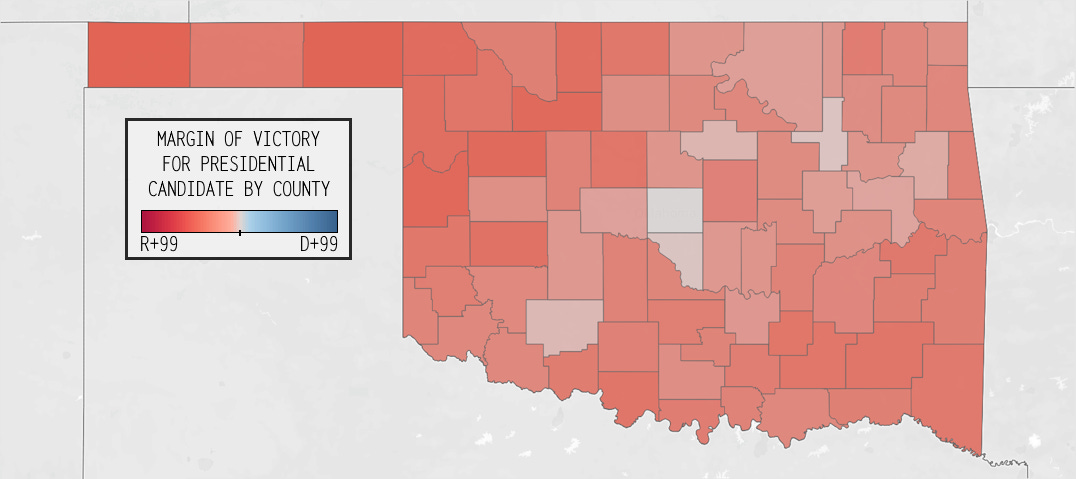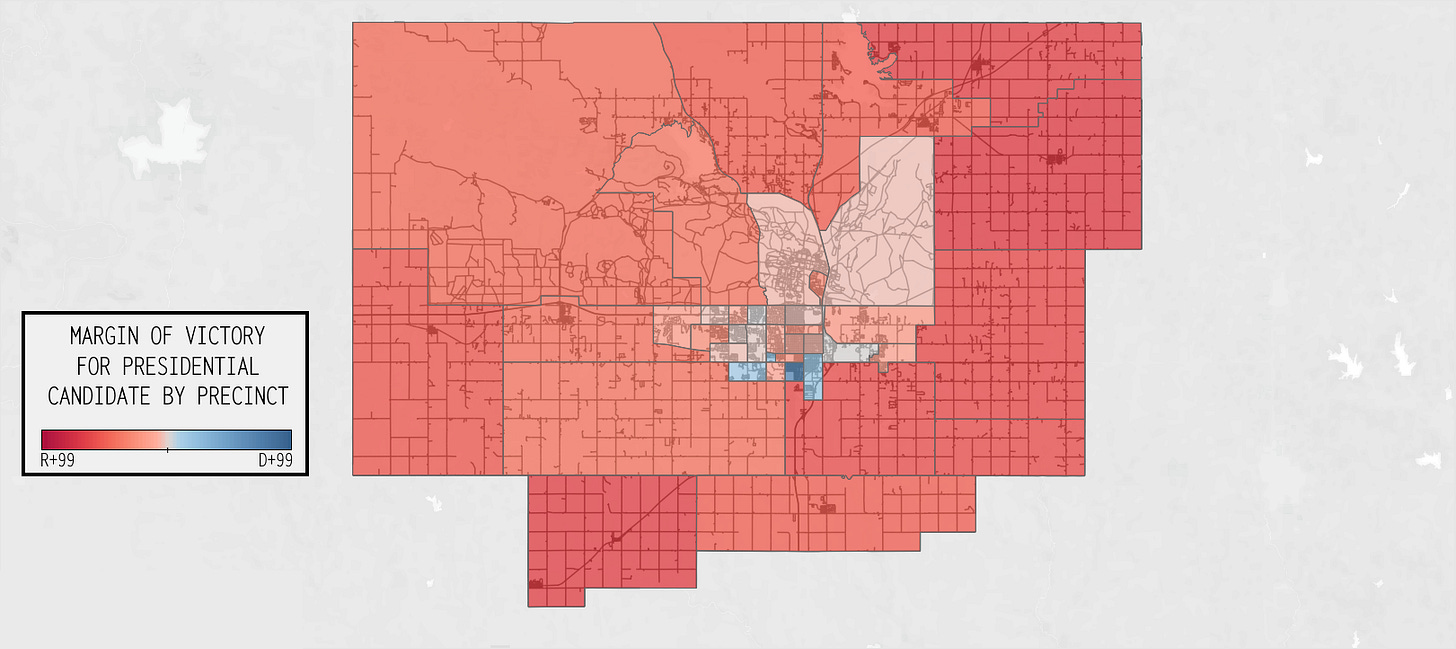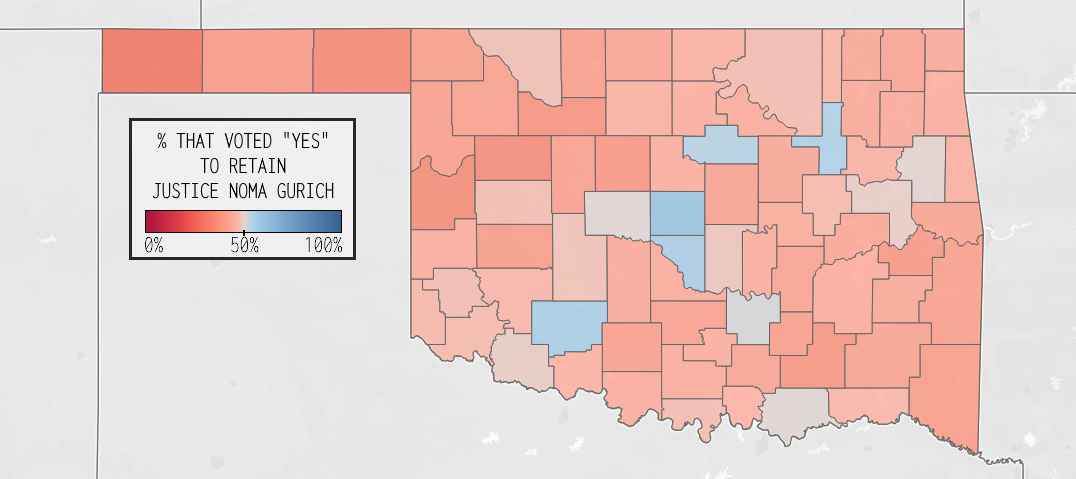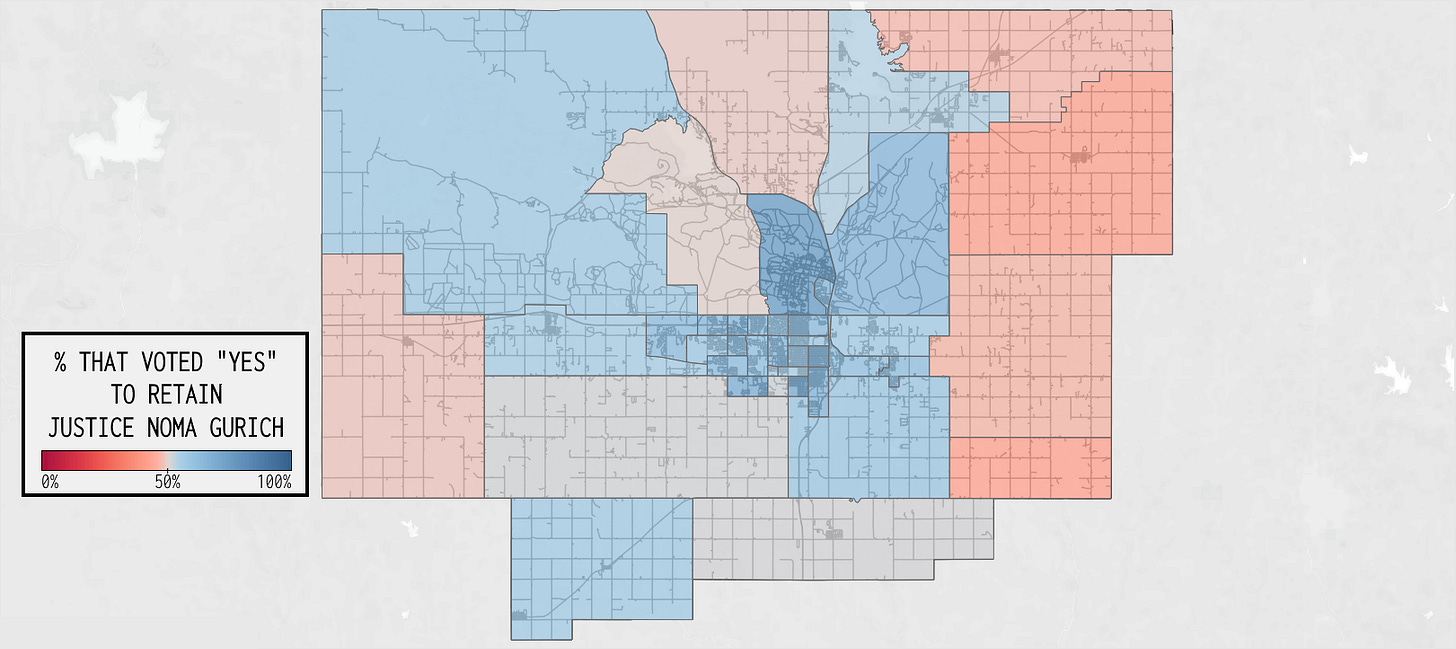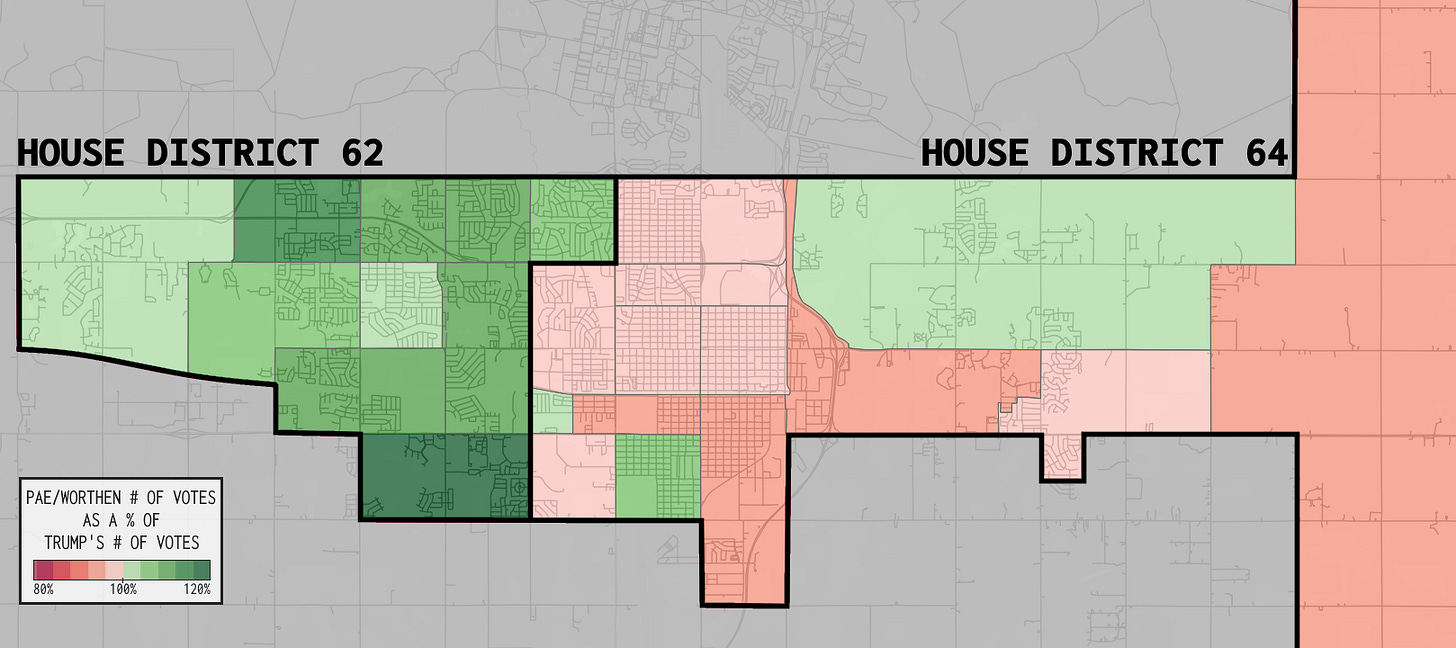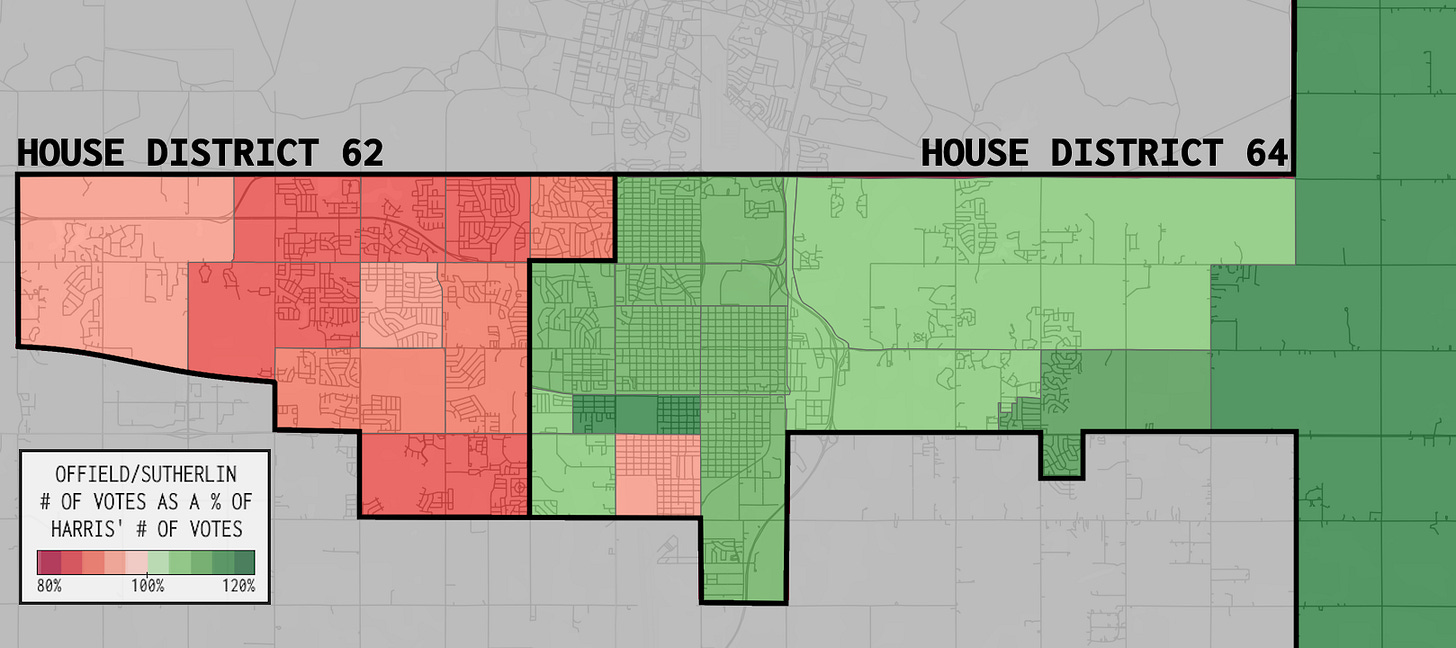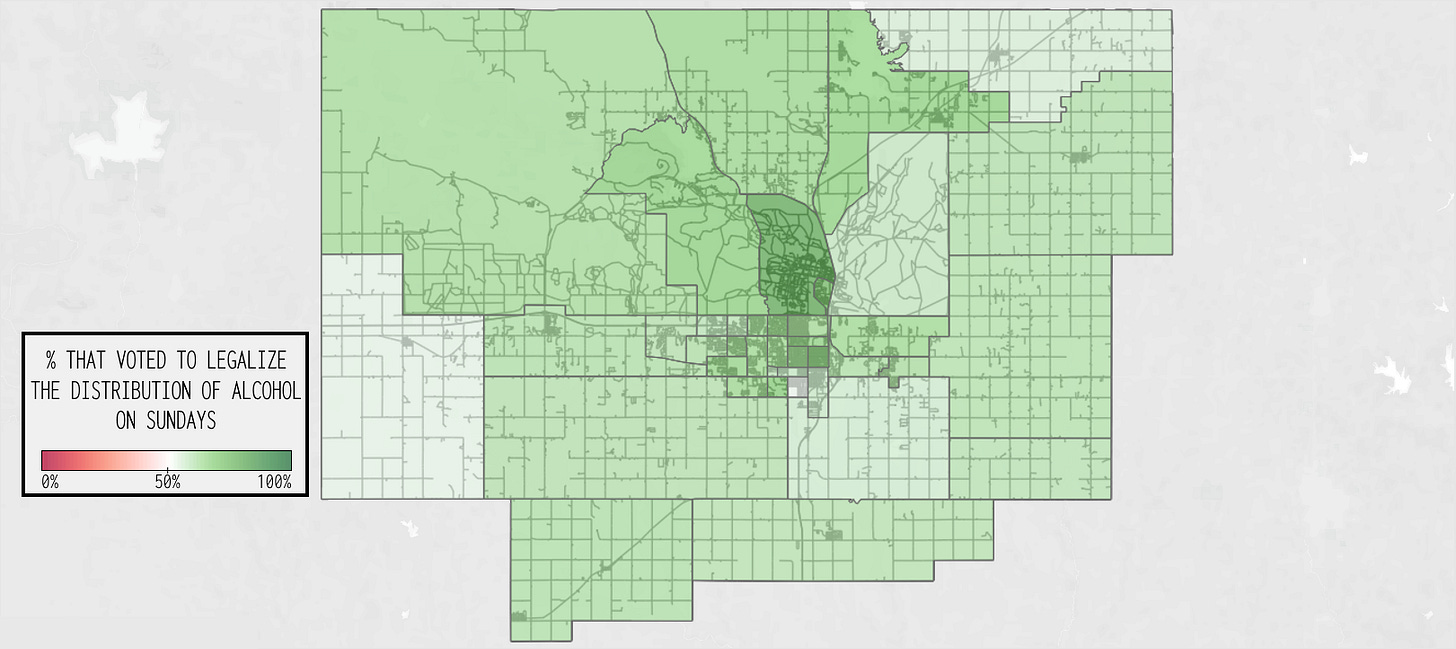5 Things Lawtonians Should Know About the Election
On November 5th, Lawton spoke. Here's what we said.
On November 5th, the United States of America held our quadrennial general elections, during which over 150 million Americans showed up to polling stations across America in order to express their preference on who should fill hundreds, if not thousands, of elected offices across the country.
In Lawton, this year’s election yielded a few notable results with regards to our general partisan preferences, our views on state government, and our general social disposition. In this election, there was something interesting for anyone who cares about civic engagement. Here, I’ll be delving into a few of the highlights:
Low Voter Turnout in Comanche County
Local Presidential Election Results
State Supreme Court Retention Election Results
Lawton’s Oklahoma House of Representatives Results
Comanche County Ballot Proposition on Sabbath Liquor
#1 - Voter Turnout in Comanche County is Really Low.

As in previous election cycles, voter turnout in Comanche County has remained low. Among every county in Oklahoma with a population over 100,000, Comanche County has consistently had the lowest percentage of voters relative to its total population, with under 30% of Comanche County’s population voting in the last election. While the percentage of voters in a given population is naturally limited since not everyone in any given county is eligible to vote, Comanche County’s low turnout remains striking.
One reason why Comanche County may have such a low number of voters compared to its population is because of Fort Sill which, while providing a population bump, does not supply the county with many voters, with one study finding that military voter turnout in the 2020 election was 27 percentage-points lower than their civilian counterparts. Military voters are also likely to vote in their home state rather than the state their station is in. Accordingly, military voters also have more difficulty voting than civilians, with many voting via finicky absentee ballots. In 2022, around 43% of military voters who wanted to vote did not due to difficulties they faced in either receiving or returning their ballot.
Another reason why Comanche County has such low voter turnout is because of its demographics. In general, poor people, young people, non-white people, and people without a college degree vote at lower rates than rich people, old people, white people, and people with a college degree. Simply put, Comanche County, which is relatively poor and contains Oklahoma’s most diverse city, contains people who are less likely to participate in elections. Contrast Lawton with Rogers County, a wealthy Tulsa suburb where nearly half of the population voted in the most recent election.1
Regardless of the reason, low turnout means that Comanche County, especially Lawton, is poorly represented on the state level. Its citizens just don’t vote.
#2 - Like 2020, Trump Swept Oklahoma, but Lawton Remains a Purple Dot
As expected, Donald Trump won Oklahoma decisively, winning nearly two-thirds of the vote to Kamala Harris’ 31.9% of the vote. The last time the Democratic Presidential candidate won a single county in Oklahoma was in the year 2000, and the last time a Democrat won the state of Oklahoma was in 1964. While Oklahoma County’s early results looked blue early in the night, it was a mirage: by the time all the votes were tallied, Oklahoma County was light red, just as it was in 2020.
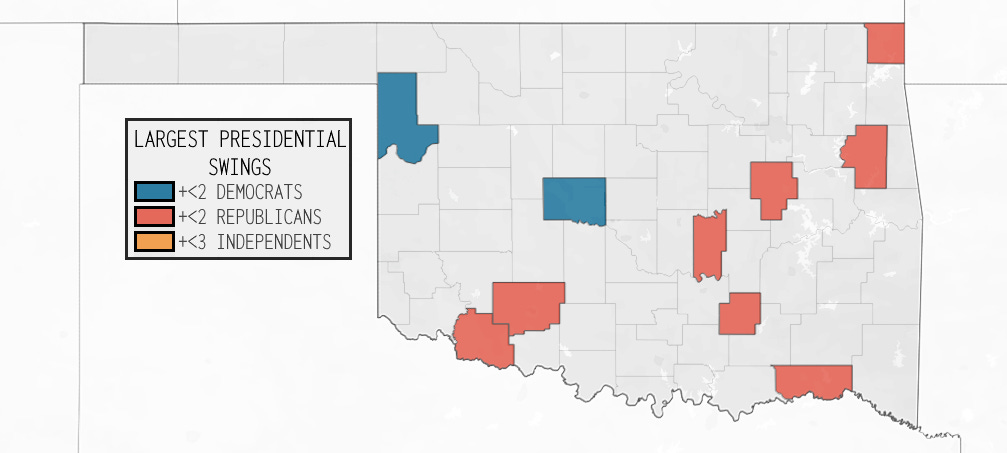
While this year’s Presidential results were very similar to 2020, the state as whole was slightly more Republican, reflecting national trends. Tillman, Oklmulgee, Seminole, Choctaw, Cherokee, Comanche, Coal, and Ottowa County all swung more than 2% in favor of the Republicans. However, not all was lost for the Democrats. They made gains of over two percent in Canadian and Ellis County. the biggest losers this election were the independent candidates, which lost almost half a percent statewide, only making small gains in Oklahoma County.
While Comanche County tilted more red this year than in 2024, it remained bluer than Oklahoma as a whole. Lawton itself remained a purple dot. While precincts in downtown Lawton, Pecan Hills, and the eastern suburbs favored Republicans, precincts south of Lee Boulevard overwhelmingly favored Democrats. The remainder of Lawton’s suburbs were the most competitive precincts in the county, favoring one candidate or another by slim margins. With a particularly strong Republican or Democratic ticket, it would be easy to imagine Lawton voting decisively for either party in future elections.
#3 - Moderates and Liberals Fend Off Right-Wing Power Grab
In the last two weeks before the election, dark money groups spent millions of dollars on statewide campaigns to retain or reject three Democrat-appointed Oklahoma Supreme Court Justices. After the failure of a contentious Republican effort to abolish the state’s Judicial Nominating Commission and grant elected officials the final word in deciding Supreme Court Justices, this election was a natural next step in right-wing attempts to democratize the judicial nomination process, or more cynically, to establish a partisan judiciary.
Despite this state’s overwhelming Republican majority in partisan identification, every elected branch of state government, and Presidential preference, this effort largely failed. Of the three justices Oklahoma’s right wished to remove, two were retained in office. While the right-wing OCPA was content to run a victory lap, this election is proof that, in Oklahoma, your vote can still decide an election. Each race was decided by less than one percent: only a few thousand votes statewide.
The vote on whether or not to retain Justice Gurich was the closest statewide race in Oklahoma this year. It was the only statewide election that partisan organizers regarded as competitive, and there are numerous ways you could interpret the results. Maybe this was a right-wing overreach, and the people of Oklahoma called them on their bluff. Maybe this is proof that, when the Democrats spend money to win in Oklahoma, they can and they do. Maybe it’s proof that straight-party voting undermines Democratic margins in Oklahoma by more than anyone could have possibly imagined. Maybe it’s just proof that voters don’t really care as much about these elections as consultants might hope, and many Oklahomans simply flipped a coin for each justice’s fate.
Regardless of what’s true, I think it poses a lot of interesting questions for Oklahoma’s two political parties and their futures. In a state that’s so thoroughly dominated by Republicans, I think that the Democrats should take these elections as a rare win and consider what permitted this anomaly. As for the Republicans, it may be worthwhile looking long and hard at these maps and wondering whether JNC reform is worth the potentially devastating political toll. In 2018, after almost a decade under a frankly hubristic right-wing government, ruby red Kansas elected a Democrat as governor, and that governor is now in her second term. Let these maps serve as a warning: it can happen here too.
For our part, in Comanche County, and in Lawton especially, voters split pretty decisively in favor of retention, supporting Justice Gurich’s retention by over ten points. For as much as Comanche County broke in favor of Trump, this map is proof that Oklahoma’s right is scarcely invincible.
#4 - Pae and Sutherlin Outperformed Their Presidential Counterparts
As I discussed in a previous article, Lawton’s elections for the Oklahoma House of Representatives are generally competitive, and this was especially true in this election. In the end, however, literally nothing changed in the state legislature. Despite a modest shift towards Trump in the general election, this shift didn’t manifest itself in any Republican gains, and the Democrats were content to hold on to their sliver of state government. Lawton followed this statewide trend.
In House District 62, Representative Daniel Pae convincingly defeated Democrat Allison Offield by 14 percentage points in the most decisive election HD 62 has seen in at least a decade. Winning 5.1% more votes than Trump in his district, Pae has been extraordinarily successful at differentiating himself from his party and winning voters that Trump cannot. Nearly 10% of Pae’s voters came from ticket splitters who marked a non-Republican candidate at the top of the ballot. On the map, you can see that Pae most overperformed Trump in Lawton’s upper-middle class, White and Asian suburbs. In the precinct containing Grayson’s Mountain, he won 12% more votes than Trump, and in the precinct containing The Highlands, 16%.
The same is not true, however, for Representative Rande Worthen, who slightly underperformed Trump. In a seat that has leaned Republican in House elections by an average of 11.4 percent over the past ten years, Worthen only won by 7.6 over his challenger, Democrat Tom Sutherlin. This is a pretty weak performance, especially in a Republican-leaning year. It seems to prove that redistricting in 2020 didn’t help Worthen: his margins this year look similar those in 2018 and 2020. While he performed well compared to Trump in south central Lawton, he underperformed elsewhere downtown and in rural Comanche County.
On the Democratic side of things, Allison Offield’s map looks exactly how one would expect a map to look if a candidate were defeated by a strong incumbent with maverick appeal, but Tom Sutherlin’s map is impressive. He overperformed Harris in nearly every precinct. In rural Comanche County, Sutherlin won 14% more votes than Harris in territory that’s traditionally unfriendly to Democrats, which is an optimistic indicator for his strength as a candidate. Overall, Sutherlin overperformed the top of his ticket by a respectable 2.7 percentage-points which, while not Pae-impressive, is certainly promising for a Democratic candidate in a red seat. While Sutherlin ultimately won a majority of precincts, a marginally better Democratic performance in a future election could easily turn east Lawton blue.
#5 - Comanche County (Mostly) Likes Its Sabbath Liquor
Ending on a light-hearted note, Comanche County voted to lift the prohibition on selling liquor on Sundays. While every precinct voted in favor of the proposition, the level of support varied heavily across precincts. One disproportionately Black precinct in south-central Lawton came within twelve votes of rejecting it, and some of Lawton’s rural precincts were lukewarm on it. I imagine that these results are a consequence of socially conservative attitudes, but, since there is no Lawton exit poll, there’s no way of knowing for sure.2
Fort Sill, however, was a veritable wet fortress, with nearly 80% of voters supporting the proposition in the base’s largest precinct. Given that active duty soldiers, families, and veterans can simply buy liquor at the PX, which is not subject to county law, their strong support for this measure is surprising. Maybe they wanted more options, or maybe some active duty newcomers were surprised to learn it was illegal to begin with. Regardless of the reasons, I find this vote pretty funny.
I used voters as a percentage of the population rather than voters as a percentage of registered voters since, to my knowledge, the state doesn’t track how many citizens are eligible to register.
C’mon Cameron, get on this! I tell you what: I’ve conducted an exit poll before in OKC. If you email me, I’ll organize it myself in 2026. — Brayden.Wayne.Johnson@OnlyToThinking.com



